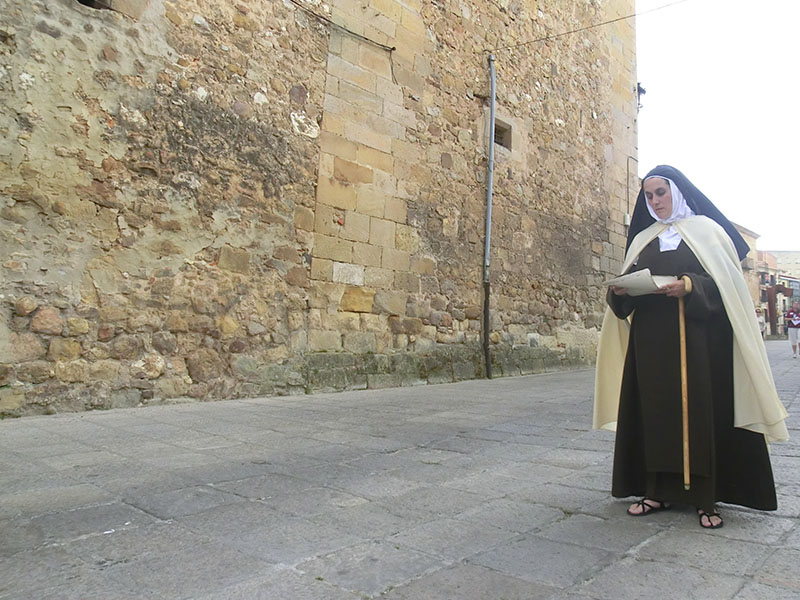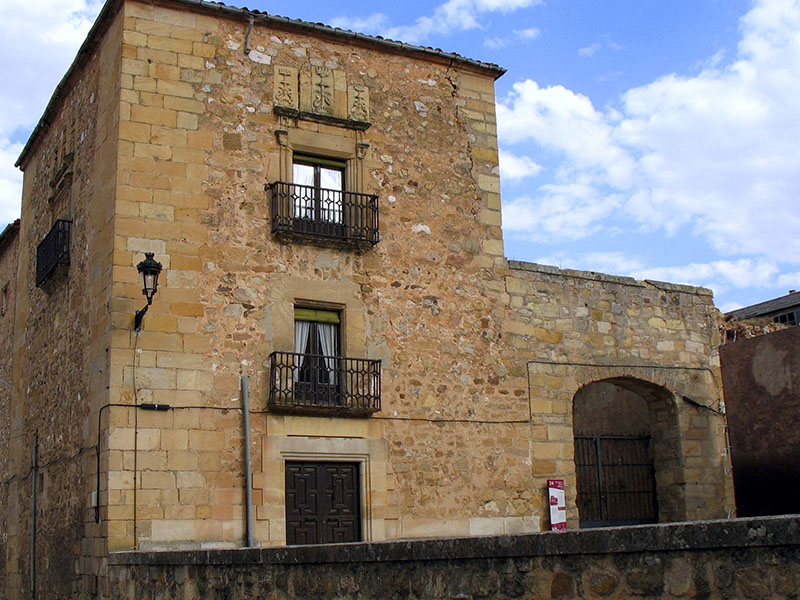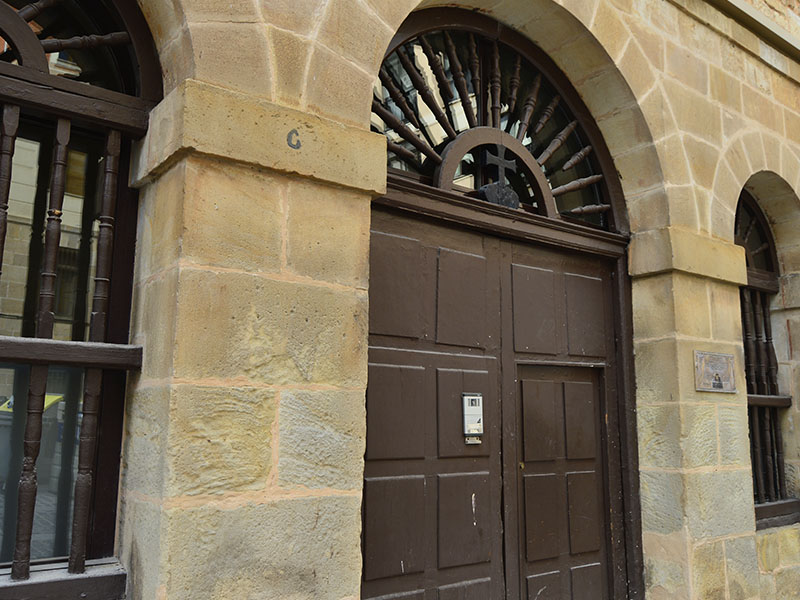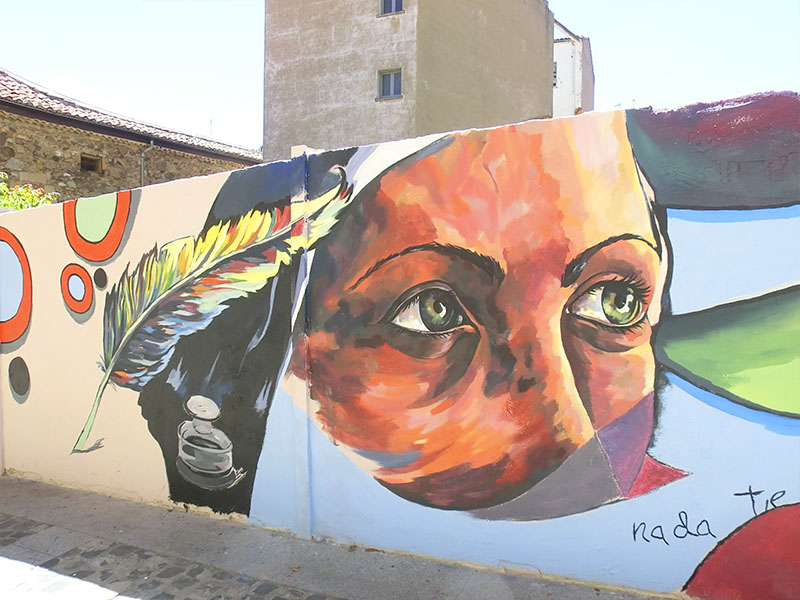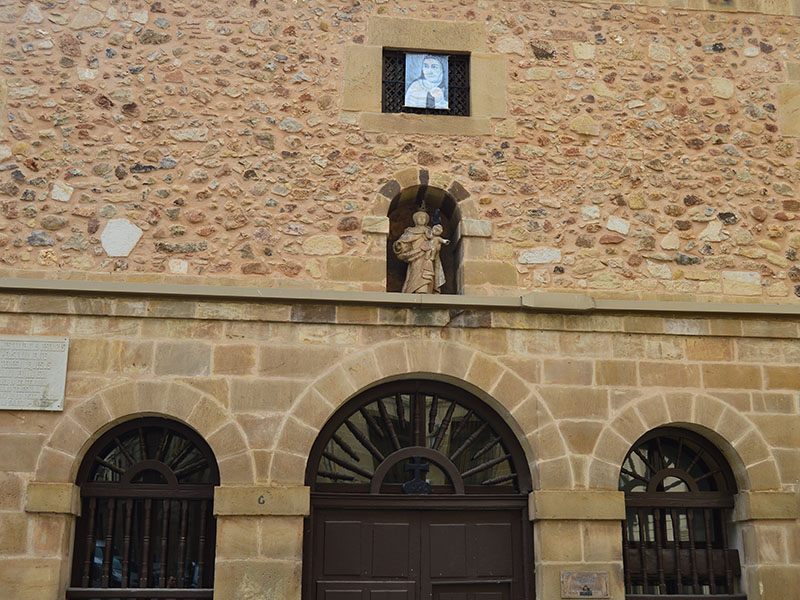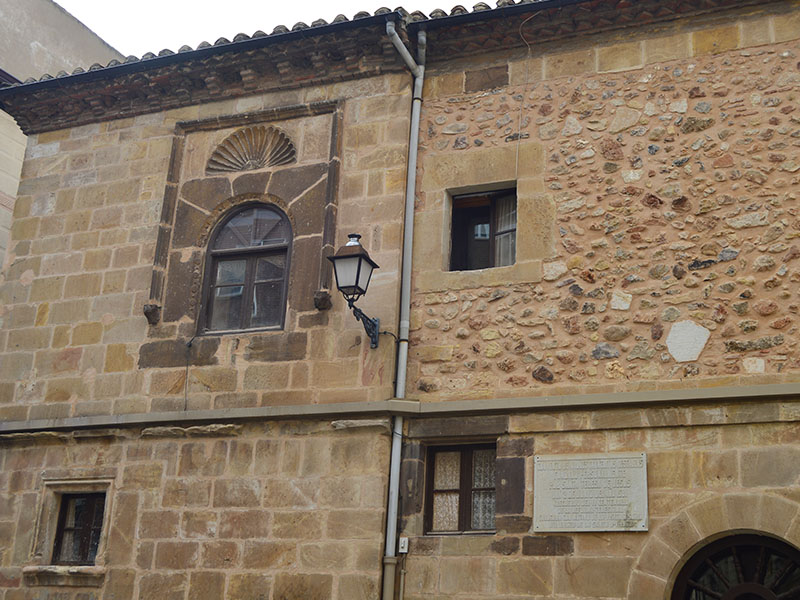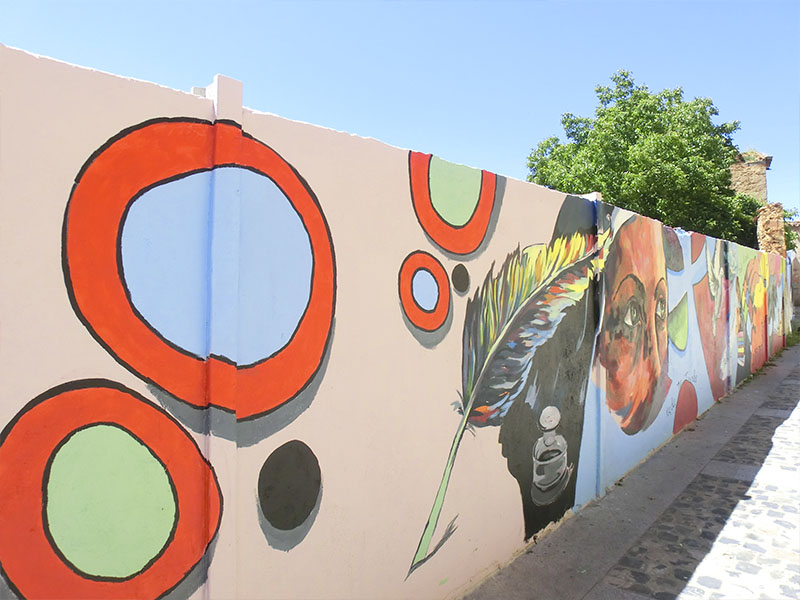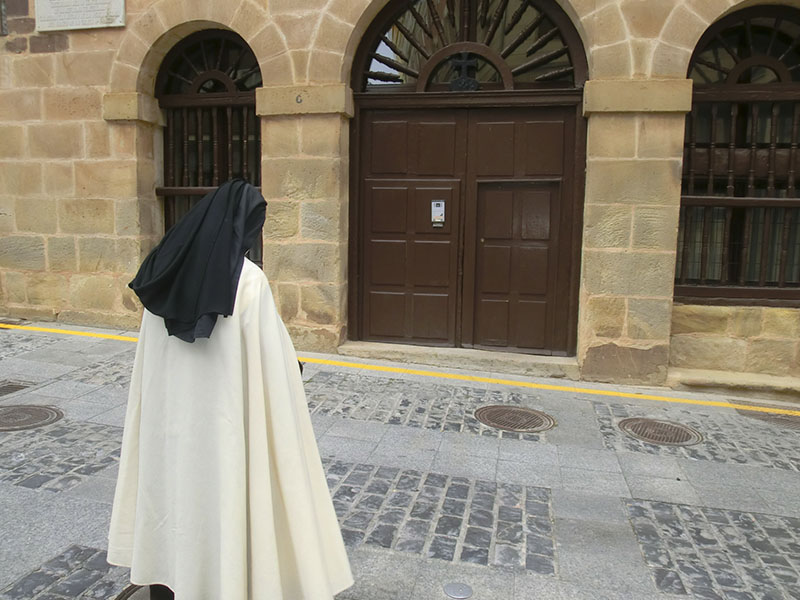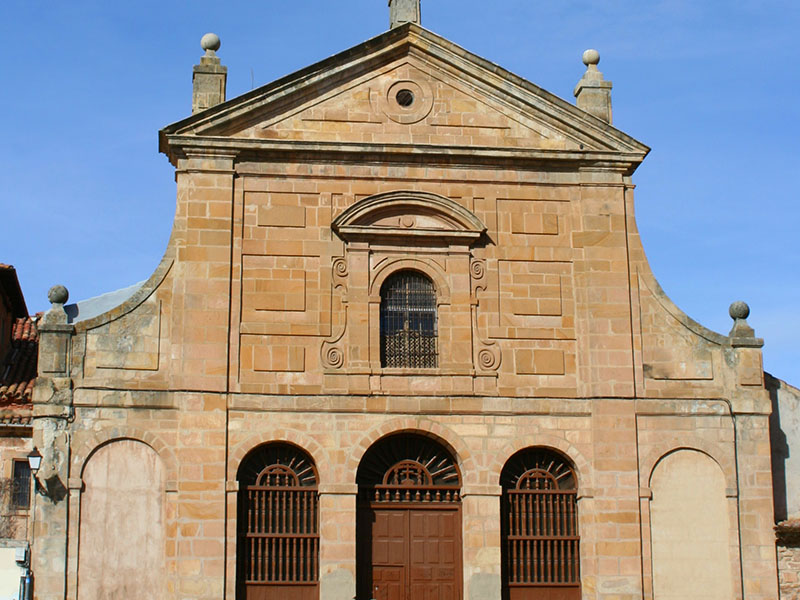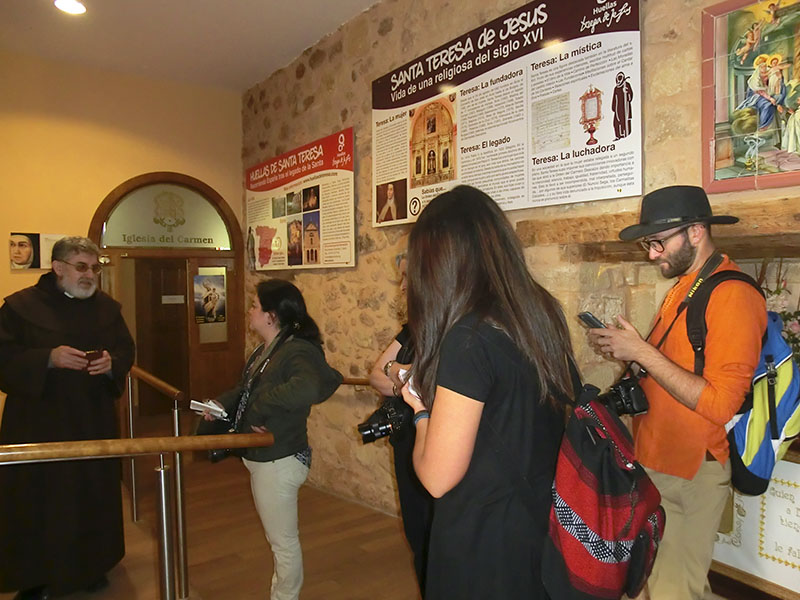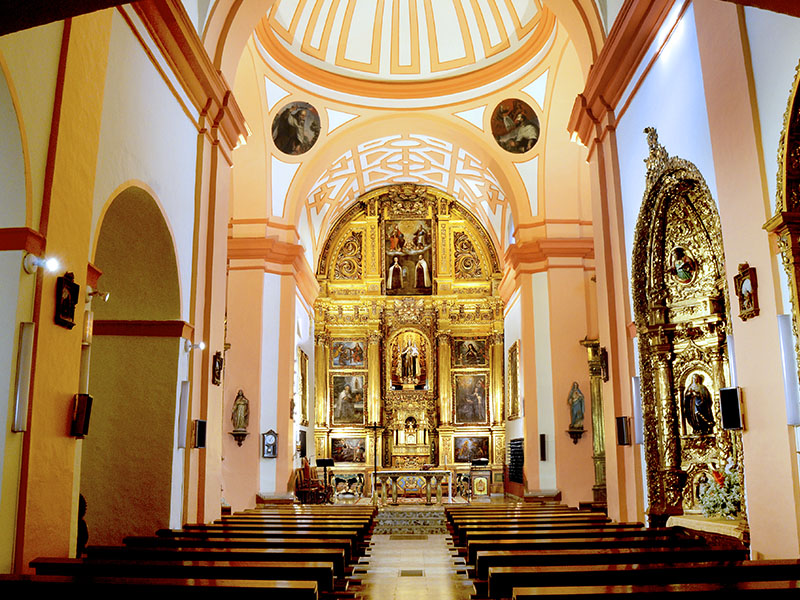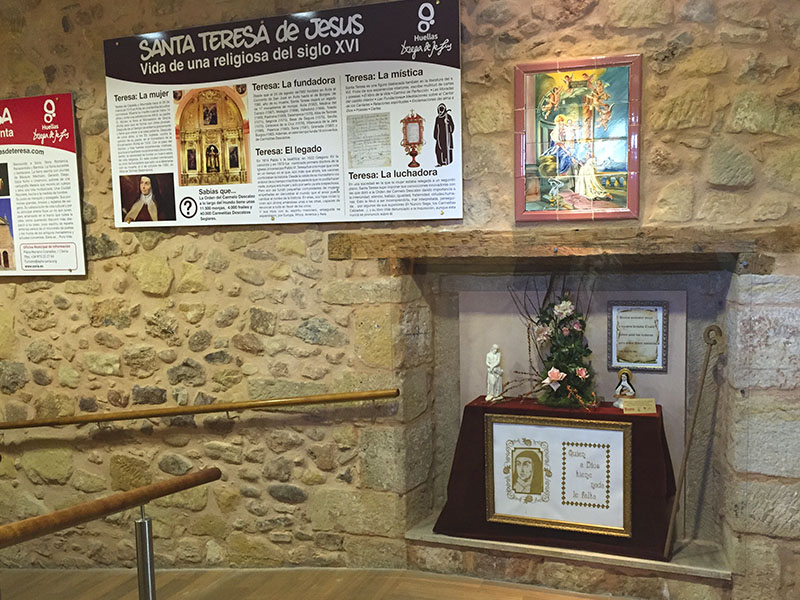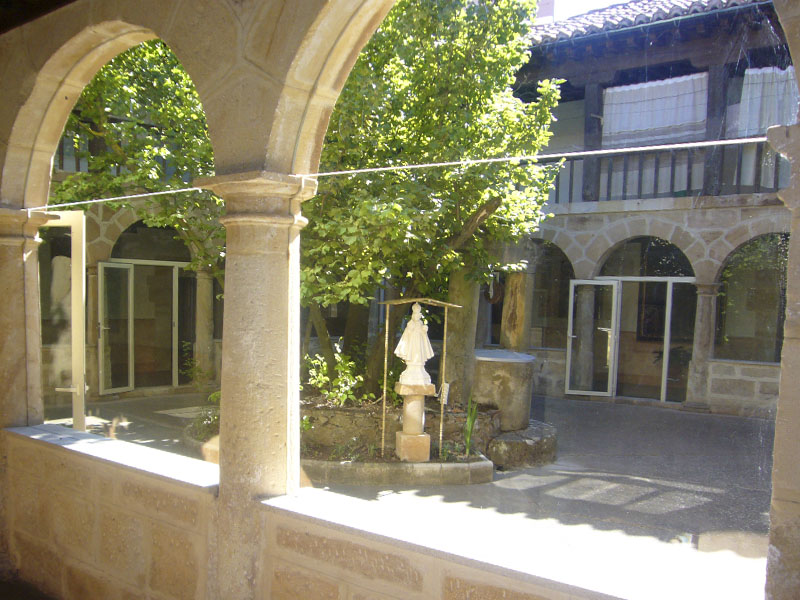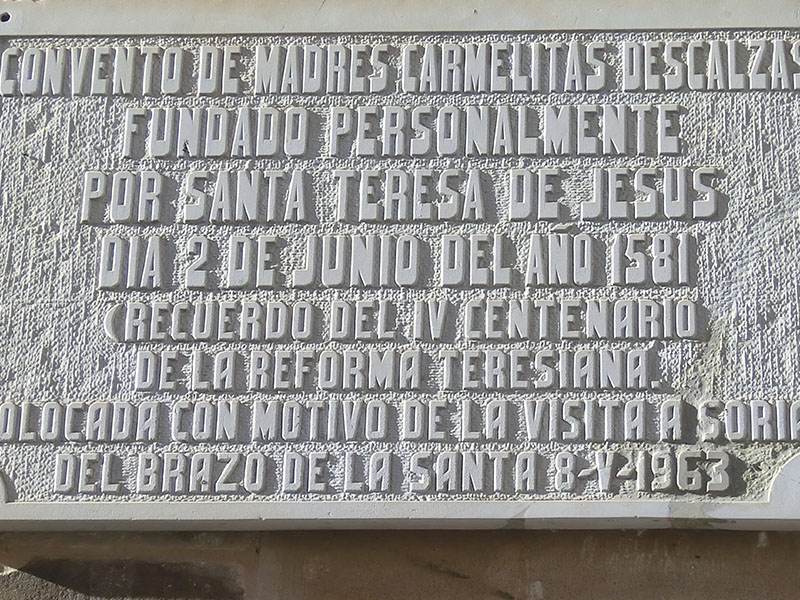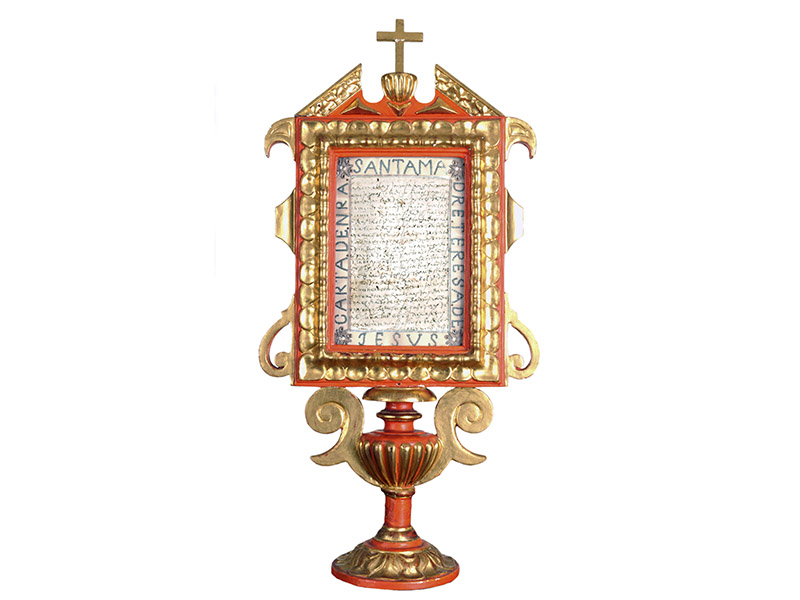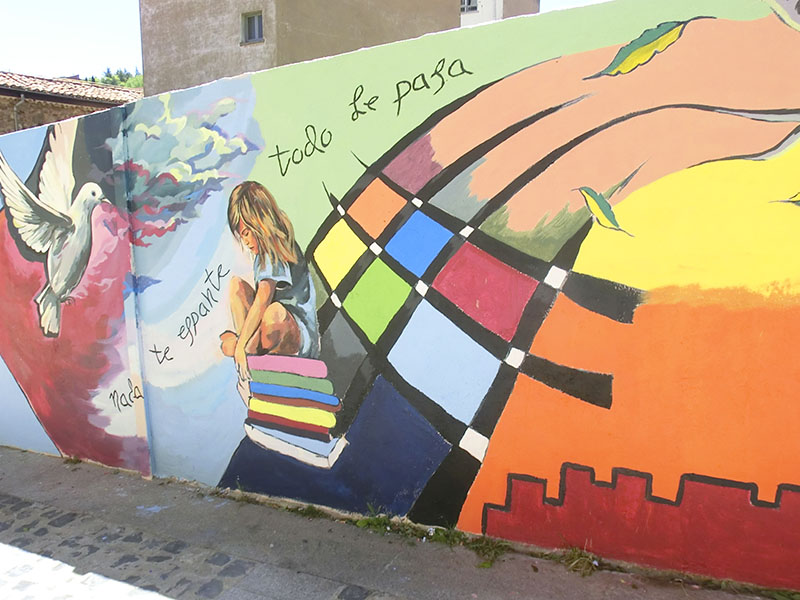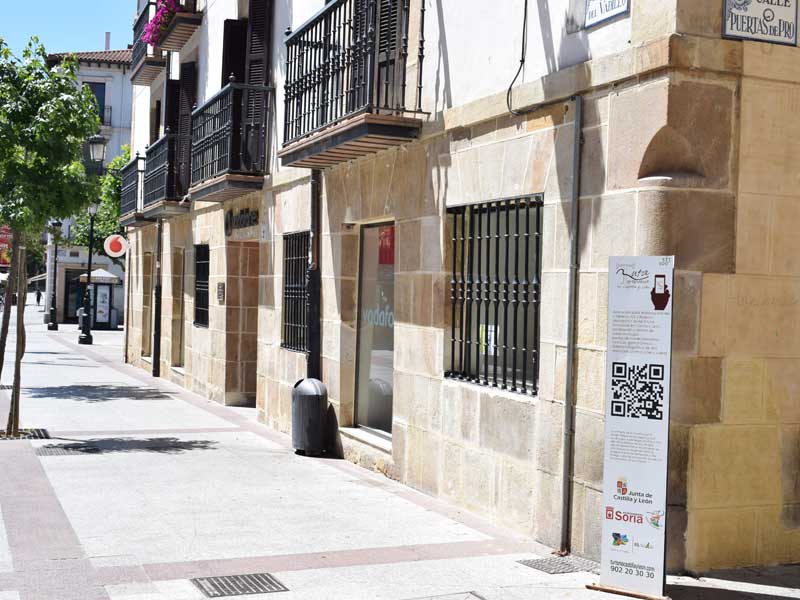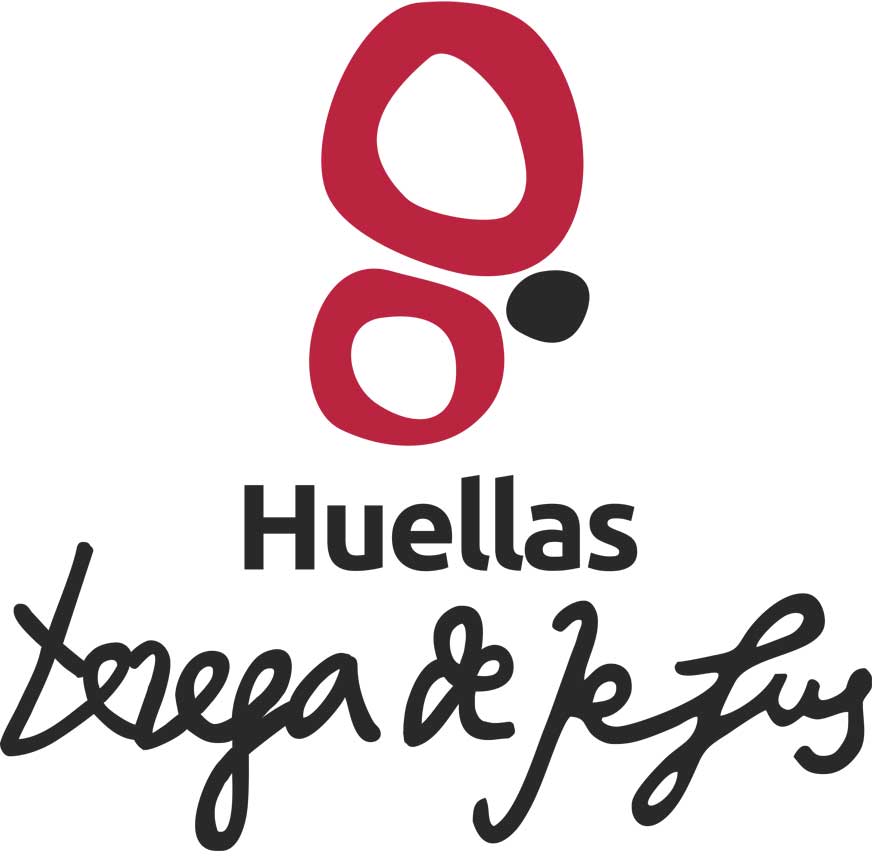TERESIAN ROUTE
TRACES OF TERESA OF JESUS
Soria is included in the "Route of the Santa Teresa Latest Dwellings" framed within the "Teresian Route in Castile and Leon". This route has in each of the places with landmarks differentiated signaling which facilitates traveler as well as information, its exact location and includes the places of passage and stay of the Santa in our city starting at the old gate behind (1) today now defunct, place where Teresa of Jesus (1515-1582) arrived Friday evening June 2, 1581 from the Burgo de Osma. In this gateway of the old walled medieval town waiting to Mother Teresa the most noble knights and churchmen of the city, who received the religious horseback. The great reputation that Teresa and her order had in Soria, also called the rest of the people who looked forward to receiving the delegation of the Holy.
We continue the walk through the city center on the central street of Collado until you reach the Plaza Mayor, from which a few meters towards the river, we find the Palacio de Don Juan de Castilla or Beteta Palace (2) which still remains the debonair air of the tower, arched entrance and windows; place from which the holy Bishop looked for the procession of the holy giving his blessing, as stated Santa Teresa in Chapter 30 of his "Book of Foundations". The tour continues in the footsteps of Teresa through the Cuchilleros street to reach the Plaza Fuente Cabrejas where the mansion that donated the noble Dona Beatriz of Beaumont for the foundation of the convent was.
The current convent of the Barefoot Nunnery Carmelites of Soria (3) was the place of stay of Teresa of Jesus in Soria and was formally inaugurated on June 14, 1581 being the fifteenth foundation of the Holy. The stay of Santa Teresa de Jesus in Soria was short in terms of time, two months and 14 days, but very durable from the spiritual standpoint, consolidating from 1581 to the present with the foundation of the Monastery of the Discalced Carmelites, leaving a indelible memory in our city. During his stay in Soria, besides work adaptation Palace Dª. Beatriz of Beaumont for the convent and organizing the Carmelite community; The Saint wrote ten letters, poetry and much of Chapter 30 of the "Book of Foundations", which tells everything about the sorian foundation. One of the works that were carried out were to join the convent to the Church, for which a double passageway that connected the monastery with the temple, a sort of corridor was built for religious could enter the sanctuary without go outside.
The original building of the convent remains the facade facing the Source Cabrejas square: is smooth, with very small windows and little decoration except a niche with the image of the Virgin and Child, and the window that matched the room Chaplain with plateresque features. Inside the building the current Order of Discalced Carmelites have original fragments of letters written by Teresa of Jesus and in the courtyard of the cloister a hazel is said was good enough to plant the religious is also preserved. The cloister was rebuilt between the years 1605-1609 when works were also made to build the staircase and parlor. Today you can see on the facade of the convent a bronze plaque which shows the recognition of the city to the legacy of the figure of Santa Teresa de Jesus, placed during the celebration of the V centenary of his birth.
A few meters we find the Church of Carmen (4), successor to the then church of Our Lady of the Five Towns, who donated the Bishop; the church lasted until 1648, the year begins to build the present. The renovation work lasted until August 6, the day Mr. Bishop celebrated the first Mass in the presence of Teresa of Jesus. The current church is an example of simplicity and taste, with three naves on a Latin cross and emphasizes the cover, which follows the Jesuit structure, austere in decoration and geometric shapes.
If accessed inside through the side door at the Carmen Squere you can see a small Teresian exhibition which features a replica of the "original" cane andariega who came to Soria on June 16, 2015, and the travel to the walls inside the temple and explanatory panels allusive to the Holy. Inside the temple houses works of great artistic value, the altarpiece, those of John of the Cross, Santa Teresita and San Joaquin are an inordinate baroque style. Noteworthy are also the altarpieces of San Jose and Santa Ana rococo style.
Next to the church is the convent of Barefoot Carmelites, whose foundation is formalized around 1581 and, together with the Order of the Barefoot Carmelites, now follow the teachings of St. Teresa of Avila and John of the Cross.








